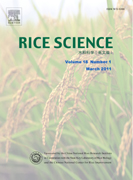|
|
Paddy Husk as Support for Solid State Fermentation to Produce Xylanase from Bacillus pumilus
Ranganathan KAPILAN, Vasanthy ARASARATNAM
2011, 18(1):
36-45 .
To optimize culture conditions for xylanase production by solid state fermentation (SSF) using Bacillus pumilus, with paddy husk as support, solid medium contained 200 g of paddy husk with 800 mL of liquid fermentation medium [xylan, 20.0 g/L; peptone, 2.0 g/L; yeast extract, 2.5 g/L; K2HPO4, 2.5 g/L; KH2PO4, 1.0 g/L; NaCl, 0.1 g/L; (NH4)2SO4, 2.0 g/L, CaCl2•2H2O, 0.005 g/L; MgCl2•6H2O, 0.005 g/L; and FeCl3, 0.005 g/L] at pH 9.0 was applied. The highest xylanase activity (142.0 ±0.47 U/g DM] was obtained on the 6th day at 30°C. The optimized paddy husk to liquid fermentation medium ratio was 2:9, and the optimized culture temperature was 40°C. When commercial Birchwood xylan was replaced with different concentrations of corncob, xylanase production was maximized (224.2 U/g DM) in the medium with 150 g/L corncob. Xylanase production was increased by sucrose, fructose and arabinose, whereas reduced by glucose, galactose, lactose and amylose. When organic nitrogen sources were replaced with locally available nitrogen sources such as groundnut powder or sesame seedcake powder or coconut seedcake powder or soy meal powder, the highest xylanase production (290.7 U/g DM) was obtained in the medium with soy meal powder and 16.0 g/L of soy meal powder was the optimum (326.5±0.34 U/g DM). Based on the optimization studies, B. pumilus produced 2.3 times higher xylanase activity. The medium cost was reduced from 2 458.3 to 178.3 SLR/kg and the total activity which could be obtained from 1 kg of the medium was increased from 48 624 to 220 253 Units.
|

